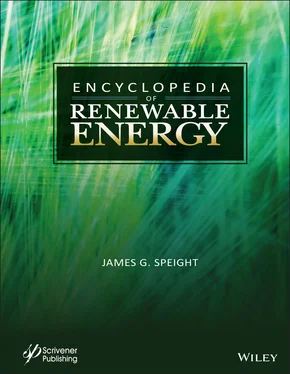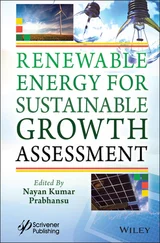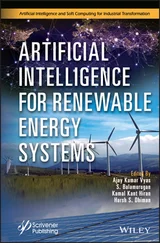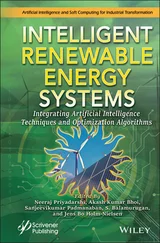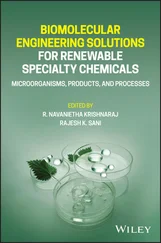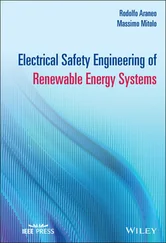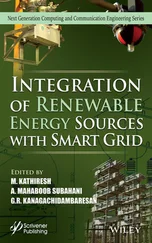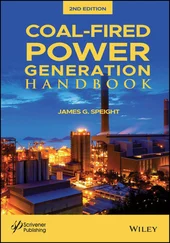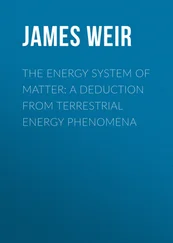James G. Speight - Encyclopedia of Renewable Energy
Здесь есть возможность читать онлайн «James G. Speight - Encyclopedia of Renewable Energy» — ознакомительный отрывок электронной книги совершенно бесплатно, а после прочтения отрывка купить полную версию. В некоторых случаях можно слушать аудио, скачать через торрент в формате fb2 и присутствует краткое содержание. Жанр: unrecognised, на английском языке. Описание произведения, (предисловие) а так же отзывы посетителей доступны на портале библиотеки ЛибКат.
- Название:Encyclopedia of Renewable Energy
- Автор:
- Жанр:
- Год:неизвестен
- ISBN:нет данных
- Рейтинг книги:3 / 5. Голосов: 1
-
Избранное:Добавить в избранное
- Отзывы:
-
Ваша оценка:
- 60
- 1
- 2
- 3
- 4
- 5
Encyclopedia of Renewable Energy: краткое содержание, описание и аннотация
Предлагаем к чтению аннотацию, описание, краткое содержание или предисловие (зависит от того, что написал сам автор книги «Encyclopedia of Renewable Energy»). Если вы не нашли необходимую информацию о книге — напишите в комментариях, мы постараемся отыскать её.
Written by a highly respected engineer and prolific author in the energy sector, this is the single most comprehensive, thorough, and up-to-date reference work on renewable energy.
Encyclopedia of Renewable Energy: Audience
Encyclopedia of Renewable Energy — читать онлайн ознакомительный отрывок
Ниже представлен текст книги, разбитый по страницам. Система сохранения места последней прочитанной страницы, позволяет с удобством читать онлайн бесплатно книгу «Encyclopedia of Renewable Energy», без необходимости каждый раз заново искать на чём Вы остановились. Поставьте закладку, и сможете в любой момент перейти на страницу, на которой закончили чтение.
Интервал:
Закладка:
This system is run as a wet process; thus, no predrying of the biogas is formally required but is recommended. Any hydrogen sulfide in the biogas stream is adsorbed in the process after which the hydrogen sulfide (H 2S) is purged from the system into the wastewater blow-down.
See also: Biogas, Gas Cleaning, Gas Processing, Gas Treating.
Biogenic Coal Bed Methane
All coals contain biogenic gas, but only the higher rank coal (bituminous) contains thermogenic gas. Biogenic methane is formed in coal seams by naturally occurring bacteria that are associated with meteoric water recharge at outcrop or sub-crop. Biogenic methane is a term used to describe natural gas derived from the reduction of carbon dioxide via biogeochemical processes. The processes which contribute to the production are complex, poorly understood, but pervasive in nature and vary from site to site. Biological processes include methanogenesis and hydrogenogenesis, but there are also geochemical processes that have been identified. Methanogenic bacteria generate methane by several pathways, principally the fermentation of acetate and the reduction of carbon dioxide. In coal seams, methanogens may increase coalbed methane production.
See also: Biogas.
Biogeochemical Cycles
A biogeochemical cycle (also called the substance turnover or cycling of substances) is a pathway by which a chemical substance moves through biotic compartments the biosphere) and through abiotic compartments of the Earth (such as the atmosphere, the hydrosphere, and the lithosphere).
There are biogeochemical cycles for the chemical elements (such as calcium, carbon, hydrogen, mercury, nitrogen, oxygen, phosphorus, selenium, and sulfur) as well as ; molecular cycles for water and silica; macroscopic cycles such as the rock cycle as well as human-induced cycles for synthetic compounds such as polychlorinated biphenyl derivatives (PCBs). In some cycles, there are reservoirs where a substance remains for a long period of time.
The biogeochemical cycles operate at the global scale and involve all of the main components of the Earth system in which materials are transferred continually between the atmosphere, the aquasphere, and the geosphere. However, since the biogeochemical cycles involve elements that are essential for life, organisms play a vital part in those cycles. Typically then, the biogeochemical cycles involve an inorganic component (the abiotic part of the cycle, including sedimentary and atmospheric phases) and an organic component (comprising plants and animals, both living and dead). Like other environmental systems, biogeochemical cycles involve the flow of substances between stores (also known as reservoirs) in the geosphere, atmosphere, hydrosphere, and biosphere. Water plays a vital role in mediating many of the flows between stores. Three of the key biogeochemical cycles are the nitrogen, carbon, and sulfur cycles.
Finally, it must be noted that the biogeochemical cycles have been modified substantially by human activities which is necessary for consideration to understand the various environmental issues related to human activities.
Biohydrogen
Biohydrogen is hydrogen produced biologically (by biological process), most commonly by bacteria from waste organic materials.
Hydrogen (H 2) is not available independently in the atmosphere, but is always combined with other elements. Hence, before being used, it has to be extracted from various compounds, e.g., via the syngas route. Currently, hydrogen is produced mainly from natural gas and to a lesser extent from oil derivatives (totally 77% of all hydrogen production), while its production from biomass is new – due partly to the more sophisticated manufacturing of syngas from biomass compared to natural gas, but also to the much lower relative hydrogen content of biomass vice-versa natural gas.
Hydrogen can be produced from biomass by pyrolysis, gasification, steam gasification, steam-reforming of bio-oils, and enzymatic decomposition of sugars. The yield of hydrogen that can be produced from biomass is relatively low, 16 to 18% based on dry biomass weight. In the pyrolysis and gasification processes, water-gas shift is used to convert the reformed gas into hydrogen, and pressure swing adsorption is used to purify the product. Gasification coupled with water gas shift is the most widely practiced process route for biomass to hydrogen. In general, the gasification temperature is higher than that of pyrolysis and the yield of hydrogen from the gasification is higher than that of the pyrolysis. Modeling of biomass steam gasification to synthesis gas is a challenge because of the variability (composition, structure, reactivity, physical properties, etc.) of the raw material and because of the severe conditions (temperature, residence time, heating rate, etc.) required. Hydrogen can be produced via steam gasification of biomass materials. The yield of H 2from steam gasification increases with increasing water-to-sample (W/S) ratio. The yields of hydrogen from steam gasification increase with increasing temperature.
Several concepts have promise for near-term to long-term process development for biohydrogen production. For example, the microbial shift reaction (analogous to one step of the steam methane reaction in coal gasification), operates at ambient temperatures in a single-stage process, compared to the two-stage, high-temperature, chemical catalyst processes currently used. Process development is just beginning, but this concept appears promising for near- to mid-term practical applications.
Hydrogen yields from the fermentation of organic wastes are typically less than 20% (on a heating value basis) compared to methane production. Higher yields might be possible at elevated temperatures, with nutrient limitations, and through metabolic engineering of the bacteria.
Photofermentation, the conversion of organic substrates to hydrogen by nitrogen-fixing photosynthetic bacteria, achieve high yields of hydrogen, but low solar conversion efficiencies. The inefficiency of the nitrogenase enzyme suggests that biohydrogen processes must be based on reversible hydrogenases.
Larger-scale biohydrogen production requires biophotolysis processes, such as hydrogen production from water and sunlight. Photobioreactor costs and solar conversion efficiencies are main challenges in the development of practical processes. Direct biophotolysis couples the reductant produced by photosynthesis directly to hydrogenase, producing oxygen and hydrogen simultaneously, while indirect processes separate these basically incompatible reactions through intermediate carbon dioxide fixation. Direct, but not indirect, biophotolysis processes would require hydrogenase activity in the presence of high oxygen levels.
The photosynthetic production of hydrogen employs microorganisms such as cyanobacteria, which have been genetically modified to produce pure hydrogen rather than the metabolically relevant substances. The conversion efficiency from sunlight to hydrogen is small, usually under 0.1%, indicating the need for large collection areas. However, hydrogen build-up hinders further production and there has to be a continuous removal of the hydrogen produced, by pipelines to e.g., a shore location, where gas treatment and purification can take place.
Furthermore, if the bacteria are modified to produce maximum hydrogen, their own growth and reproduction are quenched. There presumably has to be a compromise made between the requirements of the organism and the amount of hydrogen produced for export, so that replacement of organisms (produced at some central biofactory) does not have to be made at frequent intervals.
Hybrid indirect processes using both algae and photosynthetic bacteria have been proposed and tested. The simplest indirect process would use the same algal cells for carbon dioxide fixation, oxygen evolution, and hydrogen production, at separate times or even in different reactors. The hydrogen reactions would take place both in the dark and light. Light-driven hydrogen evolution requires suppression of the oxygen evolution process. The biophotolysis process must achieve the highest possible solar conversion efficiencies, which will require development of algal strains with reduced light-harvesting pigment content.
Читать дальшеИнтервал:
Закладка:
Похожие книги на «Encyclopedia of Renewable Energy»
Представляем Вашему вниманию похожие книги на «Encyclopedia of Renewable Energy» списком для выбора. Мы отобрали схожую по названию и смыслу литературу в надежде предоставить читателям больше вариантов отыскать новые, интересные, ещё непрочитанные произведения.
Обсуждение, отзывы о книге «Encyclopedia of Renewable Energy» и просто собственные мнения читателей. Оставьте ваши комментарии, напишите, что Вы думаете о произведении, его смысле или главных героях. Укажите что конкретно понравилось, а что нет, и почему Вы так считаете.
